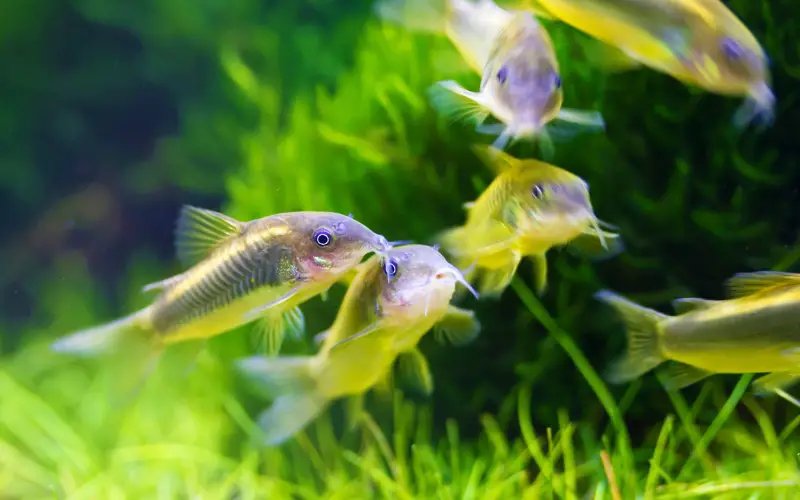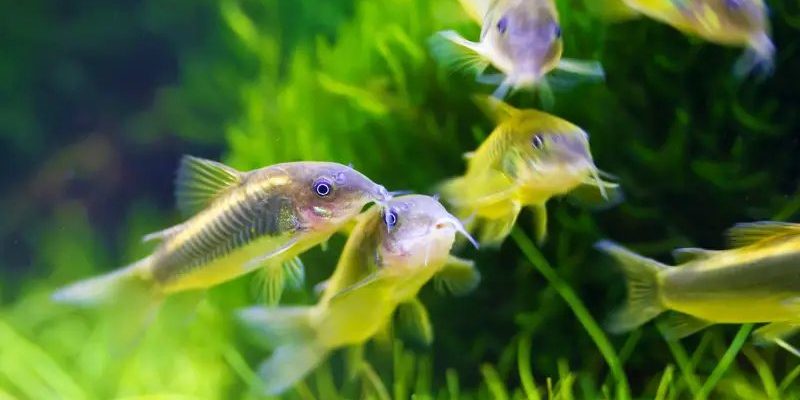
Corydoras catfish are among the most popular freshwater fish for aquarium enthusiasts. Their peaceful nature and playful antics make them a delightful addition to any tank. Plus, they’re generally easy to care for, which is a huge bonus if you’re just starting out. In this article, we’ll explore what their behaviors mean, how to interpret those little quirks, and what to watch out for to keep these charming fish happy and healthy.
Understanding Corydoras Catfish Behavior
Corydoras catfish are bottom dwellers, which means you’ll often catch them foraging around the substrate of your tank. They use their barbels, which look like tiny whiskers, to feel around for food. This is normal and is a sign that your fish are happy and healthy. Think of them like little vacuum cleaners, eagerly picking up leftover food and debris that settles on the bottom.
Here’s the thing: their behavior can also change based on their environment. If you notice them hiding more often or acting less lively, it might be time to check on their tank conditions. Factors like water quality, temperature, and tank mates can all influence how active they are. It’s crucial to ensure they feel safe and secure to encourage a more lively display.
One of the most fun behaviors to observe is when they swim in groups, often darting around playfully. This social tendency shows that they feel comfortable in their environment. Having a small group of at least three to six Corydoras can promote a strong sense of community among them. After all, they thrive on companionship!
Signs of Stress in Corydoras Catfish
If your Corydoras catfish starts acting differently, it’s essential to be alert. Signs of stress can manifest in various ways. For instance, if they begin to hover near the surface or become less active, it could indicate an issue with water quality or temperature.
Some common stress signals include:
- Flicking or rubbing against objects
- Hiding more than usual
- Sudden changes in swimming patterns
These behaviors are often their way of communicating discomfort or distress. If you catch your catfish exhibiting these signs, it might be time for a water change or a deeper examination of the habitat you’ve created for them.
Additionally, if you notice their fins clamped close to their bodies, that’s a definite red flag. Healthy Corydoras usually display their fins fully open as they swim around. Clamped fins can indicate stress or illness, and it’s worth investigating further to ensure they’re not suffering from any underlying issues.
Group Behavior and Social Structure
Corydoras catfish are inherently social creatures, and understanding their group dynamics can provide valuable insights into their behavior. In the wild, they often form schools, which is why having more than one in your aquarium is essential for their happiness.
When kept in groups, you’ll see them engage in playful chasing and even synchronized swimming. This is their way of establishing social order and bonding with one another. You might even observe them performing little “dance moves” together, flaring their fins and twisting about amusingly. It’s one of those sights that can brighten your day, reminding you just how lively these fish can be.
On the flip side, if a newcomer is introduced into an established group, you might see some initial squabbling. This is typical behavior as the established fish assert their territory. As long as no fish appears to be hurt or excessively bullied, this behavior is generally harmless and should settle down once the new fish finds its place within the group.
Corydoras Catfish Feeding Habits
Feeding time can reveal a lot about the personality of your Corydoras catfish. They’re not picky eaters, which makes it fun to experiment with different types of food. You might notice them quickly swimming to the bottom of the tank when they see you approaching, eagerly anticipating their meal.
When feeding, it’s best to provide a mixture of high-quality pellets, flakes, and even some vegetable matter like blanched zucchini or spinach. They’ll scurry around, using those little whiskers to dig through the substrate for the tiniest morsels. It’s like watching them at a buffet—each catfish using its senses to hunt down the tastiest bites!
However, be cautious not to overfeed. Corydoras have a tendency to gorge themselves, which can lead to health issues like swim bladder disease. A good rule of thumb is to feed them only what they can consume in a few minutes and remove any uneaten food afterward.
Common Health Issues and Behavioral Changes
No matter how well you care for your Corydoras catfish, health issues can still arise. One of the most common concerns is their susceptibility to ich, a disease caused by parasites. If you notice white spots on their bodies or fins, this is a clear sign that they need medical attention.
Other health conditions include fin rot or internal parasites, which can also change their behavior. For example, if your Corydoras seems to be swimming erratically or isn’t interested in food, it’s time to take a closer look.
Maintaining good tank hygiene and keeping an eye on their behavior can help catch these problems early. Regular water changes, a clean substrate, and a balanced diet are key to preventing many health issues.
Corydoras catfish are fascinating little creatures that bring a unique charm to any aquarium. By understanding their behavior, you can create an environment where they thrive. Remember to observe their social interactions, watch for signs of stress, and adopt good feeding practices.
As you get to know your Corydoras better, you’ll likely appreciate their quirks even more. Whether they’re exploring the substrate, swimming happily in a school, or just lounging around, these little fish have a lot to say. By tuning in to their behaviors and needs, you’re not just keeping fish; you’re nurturing a lively underwater community. So, let the little catfish adventures unfold, and enjoy the colorful world they create in your tank!

